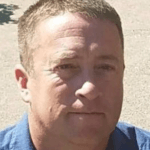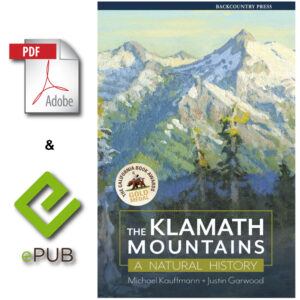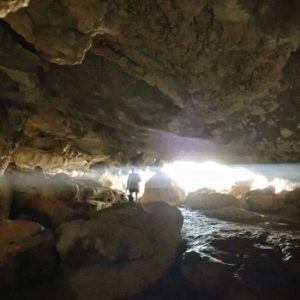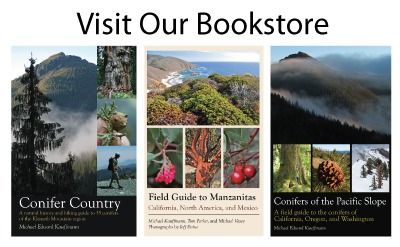The Klamath Mountains are second to the Sierra Nevada in gold abundance in California. This abundance was, unfortunately, met by the festering greed of gold miners who lacked respect for the land and the First Peoples who resided there at the time of first contact. While there were laws for mining, the miners often disregarded them. These miners looked at these beautiful mountains, with their unique features and vast landscape, and simply saw monetary value.
It’s important to recognize that the wealth that came from the gold mines of the Klamath Mountain region came at the expense of the health of the land and the well-being of the First Peoples. Though the greed of the miners was, and still is, harmful to Indigenous Tribes, they have persisted and still continue their cultural practices in the Klamath Mountains today. Klamath Mountains mining history is a complicated story.
Gold in California
In 1848 when gold was discovered at Sutter’s Mill in the Sierra Nevada, it was soon discovered that the area had geologic similarities to the Klamath Mountains. What they didn’t find out, until much later, is that these two regions share a common origin before tectonic plates shifted and drove them apart. This became evident through the way the peaks were formed throughout North America’s 4,000 miles of mountain ranges.
Klamath Mountains Mining History
The Klamath and Trinity rivers, and their tributaries, have been the greatest producers of gold in the Klamath Mountains. Gold has been found in the gravels of these rivers’ stream channels and in terrace and bench deposits near them. These deposits were mined many times using a method called hydraulicking. This process is performed by first using a high-pressure stream of water to dislodge fixed material from the ground. The slurry that results from this is then channeled into sluice boxes to extract the gold from the rest of the debris.

The biggest gold-producing districts in the Klamath River region are Shasta, Siskiyou, and Trinity counties. The most significant centers for mining in the Klamath River area are Hornbrook, Yreka, Scott Bar, Hamburg, Somes Bar, Orleans, Sawyers, Forks of Salmon, Callahan, and Cecilville. The gold in these areas usually appears in its pure form as veins going through quartz.
Healing the Land
Many of the Klamath river tributaries have been changed for the worse because of harmful mining practices. Beavers have been removed and land was converted for agricultural. Though the land has been drastically altered, there are efforts to restore and heal areas. Four hydroelectric dams were built on the main stem of the Klamath River and they’ve stopped both coho and Chinook salmon from being able to travel to the upper basin. As part of the restoration process, these dams are scheduled to be removed. Some believe that this will be one of the biggest restoration projects California has ever seen and that this endeavor will help wash away some of the scars that humans have created on the land over the years.
In another effort to help restore the land to the thriving ecosystem it once was, Tribal Members are reintroducing beavers to the watersheds of the Klamath Mountains. Beaver dams help improve the habitats for fish like salmon and the shortnose sucker which are both native to the Klamath River. By slowing the flow of water, dams improve habitat for fish. When speaking on the benefits of having beavers in an ecosystem like this one Alex Gonyaw expressed:
“Their activity is a driver for the productivity and diversity of the whole ecosystem.”

Alex Gonyaw
Senior Fisheries Biologist







Thanks for this interesting article! So beautifully written, and concise, which I appreciate. It’s the perfect teaser prompting me to buy the book about the natural history of the Klamath mountains.
Thank you for reading! I’m so glad you enjoyed my article and that it drew you to buy the book.
Thanks for writing this! I have a calendar from the Trinity County Historical Society and apparently last week was the anniversary of when hydraulic mining started in Trinity County in 1870, so it’s been on my mind. Timely article, great job!
Very cogently written, Bella. I agree with you about greed. I believe greed is one of the most destructive human flaws there is. Sadly, it has caused or contributed much human suffering throughout history. Side note: You can definitely have a future in writing if you want to.
Thank you! I really appreciate your support.
Thank you for sharing and this a very well written article, great photos too. I am impressed with Bella Fratkin’s writing abilities, and still in high school. I have learned new information here too, thank you.
Super great read, Bella! I read it aloud and we enjoyed learning and being reminded of these important truths.
Hi,
Harrison Gulch Mining District is or was roughly forty miles southwest of Redding and nowhere near the Klamath River, thought you might like to know this.
Alan
Thanks Alan — The Klamath River passes through the Klamath Mountains. This is an article about Klamath Mountains mining, which Harrison Gulch is a part of. For more on the Klamath Mountains and their location, read THIS ARTICLE.